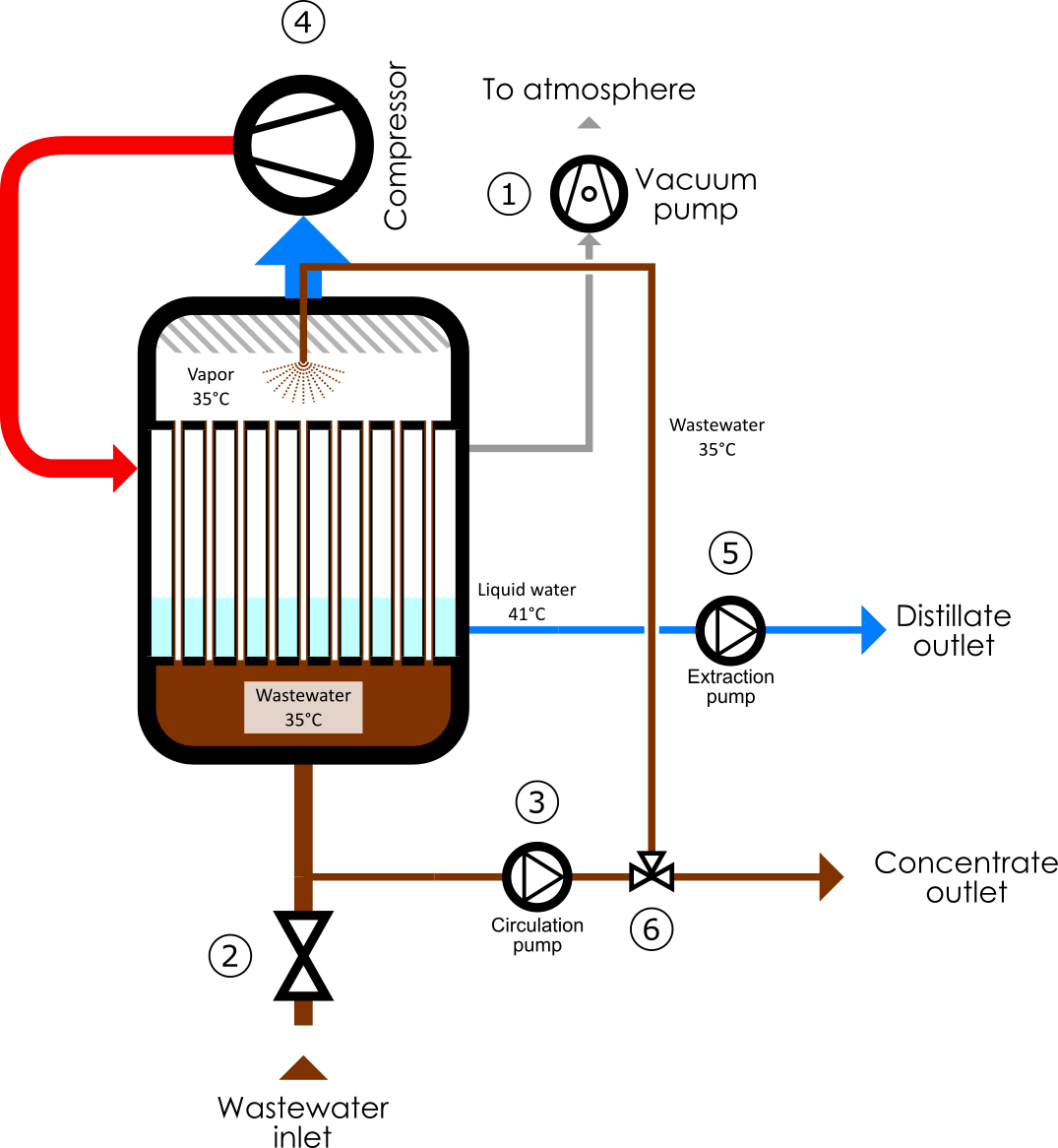- contact@leviathan-dynamics.com
- 01 48 38 22 45
- lang
Water is an essential ressource for both human activities and biodiversities. Though it is abundant, usable surface and underground water is becoming scarcer throughout the years.
Moreover, water, as we find it in nature, is not simple H2O molecules put together. Water can contain dissolved minerals and fluids. It can even contains micro-organisms. And all of these compounds are essentials to sustain the ecosystem where it flows.
In most cases, water is withdrawn from the environment to be used in human activities in which it is contaminated. This polluted water cannot be rejected into the environment. Wastewater must then receive a prior treatment before being rejected.
Depending on the water pollution and the constraints of the site, different types of water treatment technology can be found:
There are multiple design of evaporators which have each their benefits and drawbacks. The design of the evaporator depends on the wastewater management strategy and the available energy source. Our technology is based on the MVC process which is the most energy efficient evaporative process.
Our MVC wastewater evaporator works according to the following steps:

This low temperature operation has a lot of benefits:
Overall, with our smart low temperature design, our technology has better performances (energy consumption lower than 30kWh/m3 of treated wastewater vs 80kWh/m3 for traditional evaporator) while being more affordable.
Evaporative process for wastewater treatment can be apply to all kind of wastewater. The philosophy behind evaporative treatment plant is to value the treated water while biological and physical-chemical wastewater treament method is to reduce pollutant level enough to release the water safely into the environment.
Evaporative process is mainly relevant in two cases:
In all cases, membrane separation method can be an alternative to evaporative method. However, membrane separation plants are quite expensive. Though they use less energy to operate than evaporative method, they require a lot of pre-filtration and maintenance because the membranes used are not very tolerant to particule, to fouling and scaling.